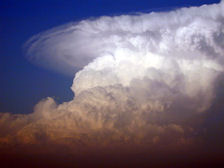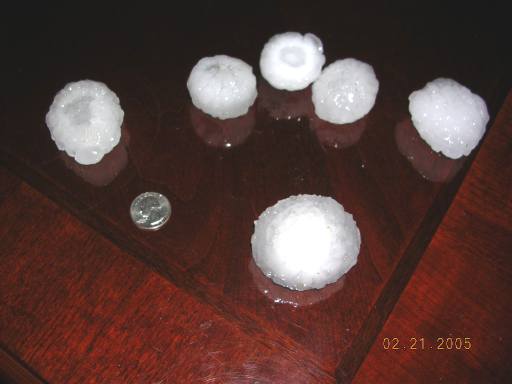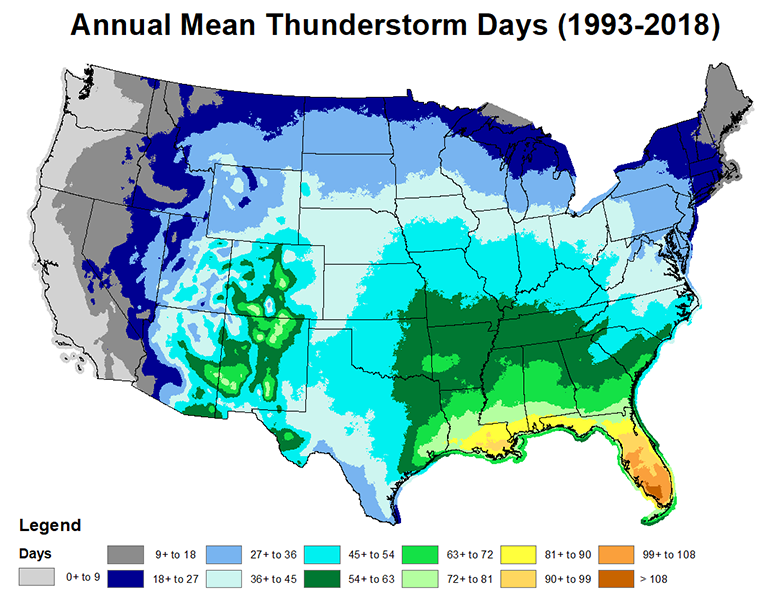|
Georgia Severe Weather Preparedness
Thunderstorm Safety
 Thunderstorms are a common occurrence in Georgia, especially during the spring and summer months. Thunderstorms can produce gusty winds, hail and even tornadoes, but in particular a severe thunderstorm can produce hail of 1” or larger (size of a quarter) and/or 58 mph (50 knots) winds or greater. Notice that lightning is not in the criteria for a severe thunderstorm warning. Typically, a severe thunderstorm lasts about 30 minutes and occurs in the afternoon and evening hours. However, severe weather is possible any time of the day and any time of the year. Supercells, a special class of thunderstorms, are particularly violent and can last for several hours. Tornadoes are often produced from these supercell thunderstorms. This type of thunderstorm is most common in the spring. Thunderstorms are a common occurrence in Georgia, especially during the spring and summer months. Thunderstorms can produce gusty winds, hail and even tornadoes, but in particular a severe thunderstorm can produce hail of 1” or larger (size of a quarter) and/or 58 mph (50 knots) winds or greater. Notice that lightning is not in the criteria for a severe thunderstorm warning. Typically, a severe thunderstorm lasts about 30 minutes and occurs in the afternoon and evening hours. However, severe weather is possible any time of the day and any time of the year. Supercells, a special class of thunderstorms, are particularly violent and can last for several hours. Tornadoes are often produced from these supercell thunderstorms. This type of thunderstorm is most common in the spring.
Damaging wind is the most common type of severe weather across north and central Georgia. These events can occur any time of the year, but peak in July when downbursts from pulse thunderstorms are common. Based on data from 1950-2010, 18 fatalities and 325 injuries were caused by damaging wind across north and central Georgia. Similar to damaging wind events, hail can occur in any month across north and central Georgia, however, hail events peak in May. April comes in a close second for hail events. Although most hail is between 1” and 2” in diameter in Georgia, 4.5” (softball sized) hail has been recorded across north Georgia four times. Check Out this Video on Thunderstorms Safety
How can you protect yourself and your family from severe thunderstorms?

-
The best thing to do is to have a plan of action in place before threatening weather develops. Know the difference between a watch and a warning. A Severe Thunderstorm Watch means conditions are favorable for severe thunderstorms to develop, but there is not an imminent threat. A Severe Thunderstorm Warning means a severe thunderstorm has been detected and an imminent threat to life and property has developed.
-
Make sure to get watch and warning information from multiple platforms. This will help ensure you receive life-saving weather information even if one method fails. NOAA Weather Radio, televisions, radios, cell phone alerts and sirens are all different ways to receive watches and warnings and each has its own benefits.
-
If severe weather is imminent, and you are inside, move to a shelter such as a basement or an interior room on the lowest floor of the building. It’s best to put as many walls between you and the outside as possible. Remember, even straight line winds from a severe thunderstorm can cause damage equal in magnitude to a tornado.
-
If you are caught outside during any thunderstorm, seek shelter in a sturdy structure.
Want to learn more about thunderstorms?
We live in one of the most thunderstorm prone areas of the country! If you want to dive deeper into the science behind thunderstorms, visit the NWS JetStream educational page on thunderstorms. There are great educational resources available on this page!

|
